Stories That Inspire
Since beginning the Monday Morning Mojo I have been asking family and friends one consistent question: “who inspires you”? The answers have ranged from Muhammad Ali to Bill Gates to Warren Buffett among other well-known personalities. Some people mention teachers and coaches who have impacted their lives in a personal way. Lee Weingrad, one 77-year-old American friend of mine in Beijing, ranks at the top of my list.
One purpose of the Monday Morning Mojo is to serve as a platform to share stories that inspire, and I believe Lee Weingrad’s life journey is worthy of a larger audience.
Delivering Healthcare in Rural China
I have known Lee for close to two decades, but not as a fellow expatriate who has worked for a foreign company in China. Lee created his own entity, a non-profit organization which focuses on maternal and infant mortality on the Tibetan Plateau. Literally, because of Lee’s vision, energy, mission, and single-minded focus, he has saved the lives of thousands of people, many who otherwise would face long, debilitating disease, or a lonely death among family members ill-suited to help. He has improved the quality of life for tens of thousands of Chinese, rural Khampa Tibetans, who have had little access to healthcare in their remote mountainous home.
For the past 33 years Lee has been running the Surmang Foundation, named for the Surmang region, meaning “irregularly shaped.” This is where Lee founded and built a rural clinic in the Khampa Tibetan region of Qinghai, China that sits 4,400 meters above sea level on the largest plateau in the world, the Tibetan Plateau. To give you an idea of its whereabouts, Mt. Everest is approximately 1,700 miles southwest of Surmang. The easiest way to get to Surmang is to fly into Yushu, China and drive four hours southwest by car, at times via rugged terrain, to reach the village center.
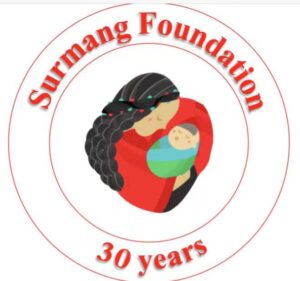
Challenge #1: Getting To Surmang
But a few flights and a four-hour drive wasn’t always the way to get there. “Before the airport was built in Yushu, you had to drive from Xining, approximately two days by car. And I even remember before flying to Xining, there was really no road to drive on, so it was a 1,200 kilometer stretch of dirt and mud trails,” Lee described.
Eradicating Maternal & Infant Mortality
When Lee first visited Surmang in 1987, he heard countless tragic stories of mothers and children dying at birth because all births were unassisted. This is an area that is unbelievably traditional as it is exotically beautiful and troubled.
In 2004 Surmang Foundation signed a cooperative agreement with the Prefecture Public Health Bureau to assess Surmang’s mother and child health. It was the first time such a survey had been done. Little did Lee know that partnership would define the clinic forever.
The problem of the survey, done by young Tibetan teachers, was reaching the nomads and villagers in any one of 20 remote encampments and communities via whatever means possible.
The initial results were astounding:
- 3,000 maternal mortalities per 100,000 live births; and
- 1 in 4 children died before the age of 5.
For Lee and the foundation that was a full stop. “That was Uganda- or Somalia-level stats,” commented Lee.
The next year in a meeting with the head of the Prefecture Public Health Department, the Director’s first question was, “what did you get for maternal mortality?” Lee swallowed hard, knowing that the survey results were not politically correct. But he was honest and the Director replied, “yeah, that’s what we expected.”
Today, because of Lee’s and the Foundation’s efforts, deaths among mothers have been eradicated and mortality among infants significantly decreased.
According to Lee, the Chinese Government was a willing partner. “On first arriving in Surmang there were no shortage of projects I could involve myself to make a difference. But access to healthcare was a no brainer. In fact, early on I learned villagers in Surmang were not the only ones in need of better health information and facilities, many nomadic people in the region also had nowhere to go,” Lee explained.
Free Healthcare with Limited Hassle
If building a clinic in some remote part of ethnic Tibet is not challenging enough, Lee had other plans for this facility. First it was to bring foreign volunteers. Then it was to hire two Khampa Tibetan doctors. But, how to charge for such services was a dilemma for Lee. “A man with 500 horses dressed and lived exactly the same as a man with five horses,” he explained. The solution was to make all services performed, and medications provided, free of charge. Let me repeat, healthcare in one of the most rural parts of China would be administered at no cost!
“To be honest, I was told I must charge for services and charge for meds, but I just couldn’t figure out how. If you go to a hospital, the cost accounting is a serious part of the overhead. When we decided not to charge for medication or services, we effectively zeroed out a significant part of our overhead,” said Lee.
And if you think free medical care and medicine is not enough, patients who come in for treatment at Surmang don’t need an appointment and there is no paperwork. “Our patients have records but filling out forms in Chinese is not part of the local culture, given the fact that they are largely illiterate in Chinese and Khampa Tibetan. In the end, the management model for the clinic created itself,” added Lee.
“Sure, there is a waiting list during heavy visitor periods, but the two doctors who have served at the clinic for more than 20 years do their very best to see whoever comes in,” described Lee. “It’s important to understand the doctors don’t only see patients in the clinic, they also make tent calls in nomadic areas and travel by car, motorcycle, horse or sometimes on foot to see patients. Both doctors have extremely high status in the area,” Lee explained. Below is a picture of the waiting room at Surmang and a patient visit.
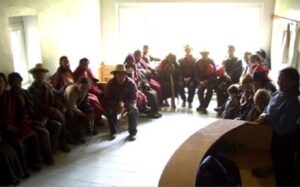
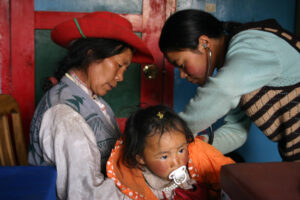
Lee’s Life Journey
Every time I see Lee, I scratch my head. How does a guy from New York, transplanted to California and Colorado end up in Surmang, set up a foundation and dedicate his whole life to the cause?
Lee’s personal story is equally fascinating. A philosophy major in college, Lee went to Bucknell for undergraduate studies and then onto University of Iowa for graduate school. After university Lee moved to Berkeley, California to work in sales at a gemstone wholesale merchant.
Berkeley was the inflection point for Lee in his life story. While in Berkeley, Lee met Trungpa Rinpoche (an incarnate Lama from a very remote part of China), who had a huge impact on Lee’s life. “When I met Rinpoche, I began to understand spirituality meant living a good life, a life of discovering your own goodness. But more, it means engaging that goodness to whomever you meet,” shared Lee. Rinpoche’s center was in Boulder, Colorado and shortly after Lee was inspired to move there.
As part of Trungpa Rinpoche’s community, Lee learned Trungpa Rinpoche was the 11th Supreme Abbot of the 12 Surmang Monasteries, an Oxford-educated Tibetan who left Tibet in 1959. Lee learned this teacher came from Surmang and had many followers still there. Determined to discover the place where Trungpa Rinpoche came from, Lee made his way to China in 1986. “I kind of became obsessed with Surmang. Figuring out how to get there was made easier by meeting the Chinese Ambassador at Trungpa Rinpoche’s house. At that point it was impossible to ignore,” Lee said.
Arrival in Lhasa
Lee first attempted to visit Surmang by traveling overland from Nepal. He departed in August of 1986, the very year that Tibet opened to foreign travel. But that didn’t make travel there any easier. “I flew into Katmandu, Nepal. Yes, the city referenced in the popular Bob Seger song. From there I got a ride to the Chinese border. Basically, once I crossed the border from Katmandu, followed by a rough two-day journey in a Land Cruiser, I arrived in Lhasa, the Capital of The Tibet Autonomous Region (the TAR). When I arrived in Lhasa and my right foot touched the ground, I suddenly thought, I know everything about this place,” reflected Lee.
Lee lived in Lhasa for about a month in 1986, trying different ways to get to Surmang, but no one would take him. “Nobody wanted to take the chance, since having a foreigner in a truck would be the end of the driver’s career,” explained Lee.
After a month in Lhasa Lee returned to Colorado to rethink his plan. “I wasn’t defeated, I just needed a different approach,” Lee added. “Surmang was not in the Tibetan Autonomous Region, it was in Qinghai, and I figured I needed to enter from the east.”
Just a few months after his return home, Lee was planning his next trip. However, this was interrupted by a tragic event. His teacher, Trungpa Rinpoche, at the young age of 48, passed away. “I put my plans on hold, attended Trungpa Rinpoche’s funeral and cremation, and returned to China shortly after,” Lee added.
A Second Try
The year was now 1987 and this time Lee flew to Beijing, China, first to learn how to speak Tibetan. That was the good news. The bad news was all the textbooks were written in Chinese. Lee’s teacher solved this by getting the help of a very attractive English-speaking tutor, who had just come back from teaching in Lhasa of all places. Her name was Wang Wenjing. From Beijing, Lee flew to Chengdu and decided to decamp at the biggest hotel, the JinJiang Binguan. He decided to stay there until a ride appeared. A month later, Lee scored a ride to take him from Chengdu to Manigango to Surmang. “It was a very rough few days, to say the least,” commented Lee. Here’s a picture of Lee in Surmang.
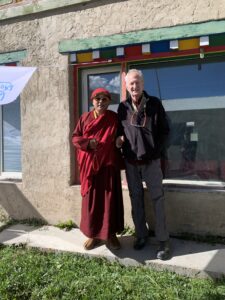
Finally in Surmang, Lee instantly felt like he found the pot of gold at the end of the rainbow. He spent a week there, sleeping in the kitchen of the Dutsi-til monastery. “Originally, I wanted to re-build the monastery, but that proved unworkable. That also was probably meant to be. Upon hearing of the lack of access to medical care, combined with an overwhelming phenomenon of mothers and infants dying at birth, I decided to build a clinic, which happened to be built on donated Surmang Dutsi-til Monastery land.,” commented Lee. Here’s a photo of the Surmang Monastery in the height of summer.

Impacting the Lives of Hundreds of Thousands of People
After 31 years in physical operation, the Surmang clinic has served hundreds of thousands of patients. By 2008, it was announced maternal mortality was reduced to zero and there was a significant decline in infant mortality. “This accomplishment did more for empowering women and girls than any other possible action. It was Surmang’s ‘1/2 the sky’ moment,” commented Lee.
The clinic conducts approximately 12,000 patient visits every year, and this includes many nomadic tribes coming on horseback from remote areas of China, mostly form Qinghai, Sichuan and Tibet. Sometimes patients travel days to visit the clinic.
Lee shared with me many of the nuances of serving people from such remote cultures. One such example involved challenges in examining patients. “Tibetan people only remove their clothes at birth and death,” shared Lee. “One-by-one people talked about their experiences with each other and slowly women and babies stopped dying at birth. As a result, an increasing number of examinations were happening,” Lee explained.
Persistence
The amazing thing about Lee is his drive. When he first arrived in the region, many other non-government organizations (NGOs) were present, including The Swiss Red Cross and Doctors without Borders. Over time, none of them lasted. “What we did was we went out of our way to work with the Chinese government to sign agreements to be able to deliver healthcare services for the citizens of the region. We not only persisted, but we improved the conditions of the clinic year-on-year thanks to the kind donations of many near and far. According to Lee, “I have received overwhelming support from many local Chinese in Beijing and beyond who care about what we are doing and the results we are having.” Here’s a picture of many of the community healthcare workers who work at Surmang.
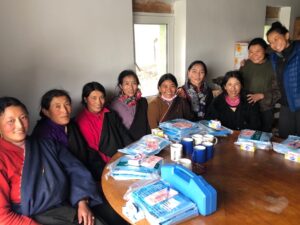
A Family Affair
Lee doesn’t deserve all the credit. His wife, Wang Wenjing, the young, attractive tutor from his second visit, is a force of nature. Lee and Wenjing stayed in touch after his 1987 visit, and they rekindled their relationship when Lee returned in 1990. Two years later, in 1992, they married, and they have raised two fantastic kids, Iana (25) and Joseph (23). Both children have taken a deep interest in Surmang and have visited many times. “Among many other things, I call Wenjing my interlocuter,” Lee commented as he smiled at Wenjing. Here is a photo of Lee with the family.
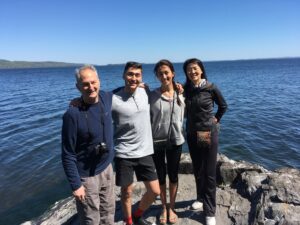
Also, here is a film created by Joseph Weingrad, with input from the entire family, It is an interview with Lai Zhang, a woman who has been connected to the clinic for years.
I have personally watched Wenjing operate over the years, and she is certainly a big part of making Surmang a success. Both Lee and Wenjing, along with their children, have embraced Surmang as a family mission. Lee even has a picture of his mother meeting Trungpa Rinpoche is his living room. Through the picture, you can see the pride she has in Lee’s pursuit. “My mother was not surprised at all by my journey,” shared Lee. “She said only an extremely stubborn person like me could make this unusual journey a reality.”
In the league of marching to a different drummer, in my humble opinion, Lee Weingrad dances to a huge drum ensemble. Lee is one man who saw a problem and did something about it. This isn’t a side hustle. Lee dedicated his whole life to a cause that has improved the lives of tens of thousands of people in a remote part of the world few people ever get to see. For this reason alone, Lee makes my list of the most inspiring people I have personally met.
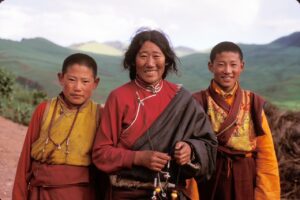
If you want to learn more about Surmang, you can find more about this incredible foundation and Lee’s story here. www.surmang.org
Have a great day and thank you for being part of this community.


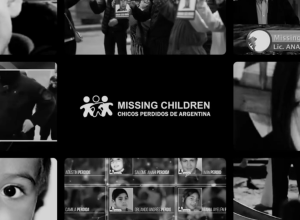
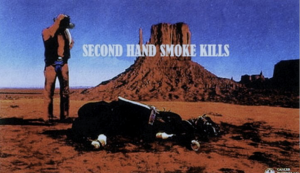

This story is truly inspiring. To dedicate your life to a good course and make it meaningful. My biggest respect for Lee Weingra, the noble man !
This story is truly inspiring. To dedicate your life to a good course and make it meaningful. My biggest respect for Lee Weingrad, the noble man !
Thank you for sharing this amazing story about a couple who is doing so much good in our world.
well told and lived. I agree. Lee’s story will resonate with a larger audience…
So proud of work my uncle has done. He is an inspiration to all. ❤️
Lee Weingrad magnifies the tenderness of the human heart. His passion crosses all borderlands.
magnificent put up, very informative. I wonder why the other experts of this sector don’t notice this. You should continue your writing. I’m confident, you’ve a great readers’ base already!
I thought it was heading to become some boring aged publish, however it really compensated for my time. I will post a hyperlink to this web page on my weblog. Im positive my guests will come across that really helpful.